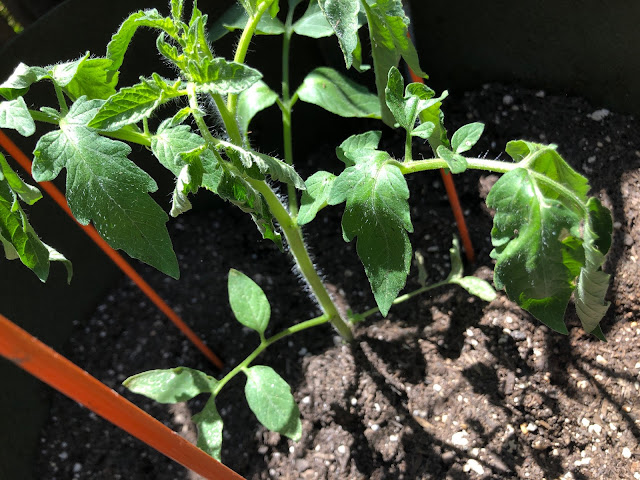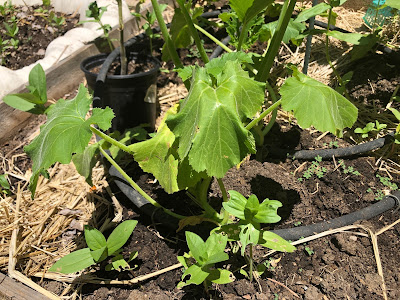
|
|
The thermometer nearby was right at 99 degrees when this photo was taken in early afternoon. But this tomato plant doesn't need a drink -- wilting is its heat-coping mechanism. If it's still like this in the morning, however, the plant will get some water. (Photos: Kathy Morrison)
|
How to tell when your plants need a drink
It’s 104 degrees; does your plant need a drink?
Maybe, or maybe not.
Many summer favorites such as tomatoes and squash can thrive in high temperatures. That’s why they grow so well here. Others can become dehydrated and stressed rapidly. (Think hydrangeas.)
Here are some tips for watering during triple-digit heat:
* Check the soil moisture first. Just because you feel hot doesn’t mean your garden needs watering. Clay soil retains moisture and coolness (especially if mulched). So look before you water.
* How to check? A moisture meter is very handy, but you can improvise. Stab a long screwdriver into the ground; if it penetrates 6 inches easily, the soil has enough moisture. (This trick doesn’t work if your testing potting mix; it tends to stay loose, even when dry.) Or check with a trowel. Dig in 6 inches and look – and feel. Is the soil moist? If it easily crumbles, then it’s time to irrigate.
* Watch your plants. Wilting in the afternoon is normal for tomatoes. Wilting in the morning is not; that’s when you know they need a drink right now.

|
|
Squash plants also react to high heat by wilting, but recover later.
|
* Water early in the morning or in the evening. That’s when there’s less evaporation and more moisture stays in the ground.
* Check the temperature of the water coming out of the hose. (This is important especially late in the day.) When you first turn on the water, the water coming out of the hose can be very hot (since it’s been sitting inside plastic or rubber under high heat). Plants don’t appreciate 130-degree water. Let the hose run a little before applying water directly.
* Keep newly planted seeds, sprouts and transplants evenly hydrated. Don’t let their planting beds dry out. They may need daily watering or irrigation every other day.
* Containers drain rapidly. Those plants may need daily watering. Move container plantings out of afternoon sun.
* Be consistent in your watering. Don’t let soil dry out completely; that can lead to blossom end rot in tomatoes and other issues. In container plants, the root ball contracts, so when you do give them a drink, the water just flows down the sides of the pot’s interior instead of actually rehydrating the roots.
* Mulch goes a long way in maintaining soil moisture and coolness. Don’t let it mound around trunks or main stems; give them a little room to breathe to avoid crown rot.

